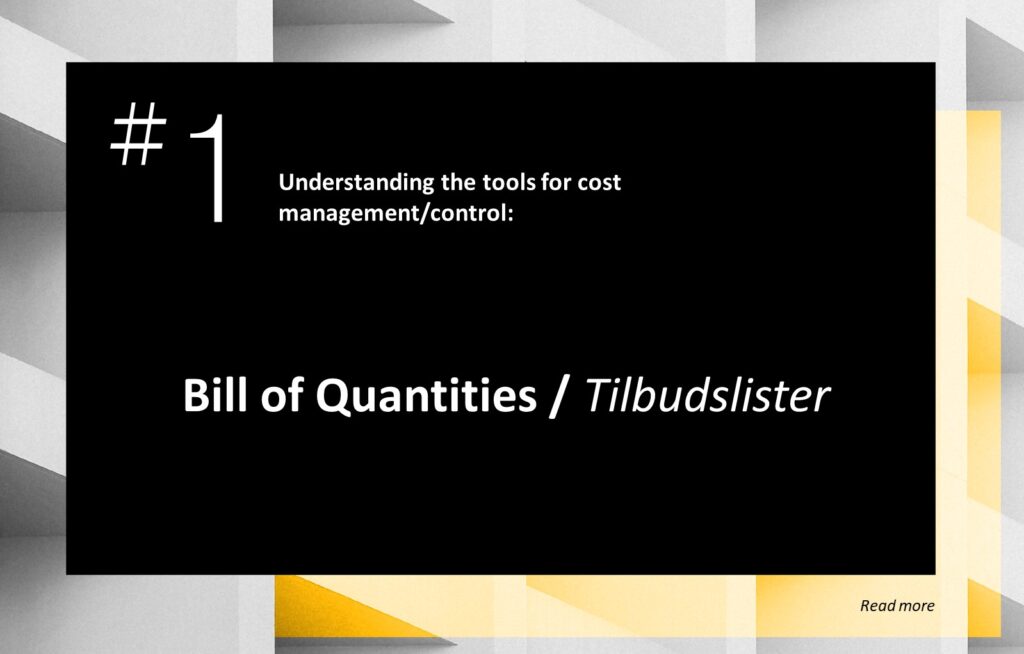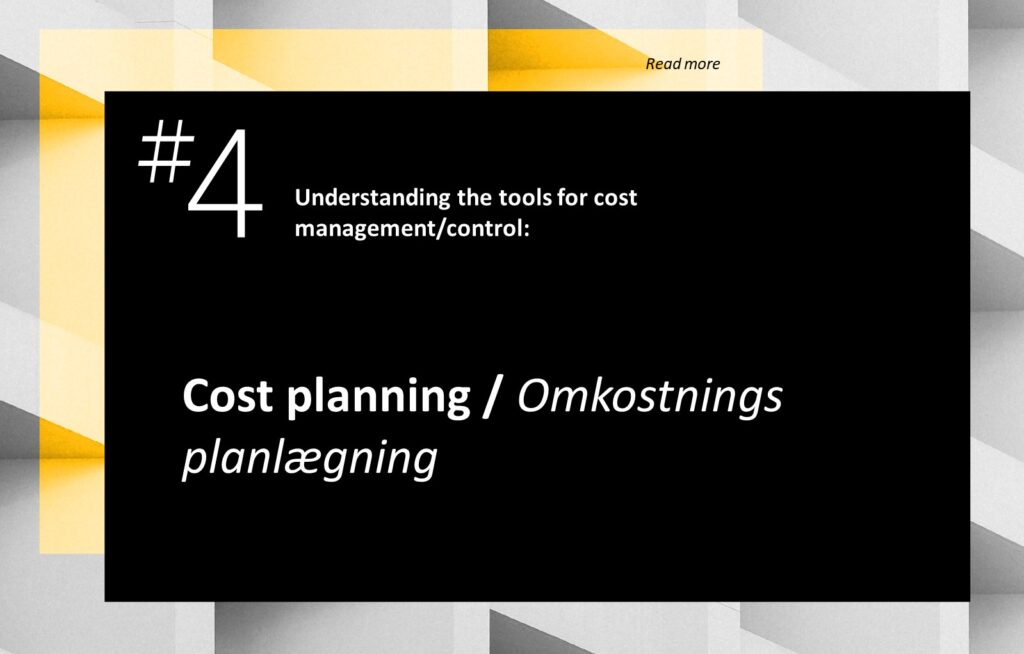Bill of Quantities / Tilbudslister”
| Almost more important than a good process for commercial management, are the tools implemented in the project to carry on this task. The most used tool for this purpose would be a standardized Bill of Quantities. The main purpose of a bill of quantities (BoQ) is to present a coordinated list of components/items, together with their identifying descriptions and quantities that encompass the building works, so that the tendering contractors are able to prepare tenders efficiently and accurately. Having a standardized BoQ will assure parity of tendering, as all bidders will base their offers on the same conditions and contents. For a quantity surveyor/cost manager, the BoQ becames a vital tool, as it will be used to manage and control the costs of the building project. Cost management and control uses include: |
- Pre-tender estimates;
- Post tender estimates;
- Cost planning;
- Pricing variations; and
- Interim valuations and payment.





